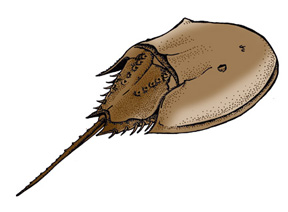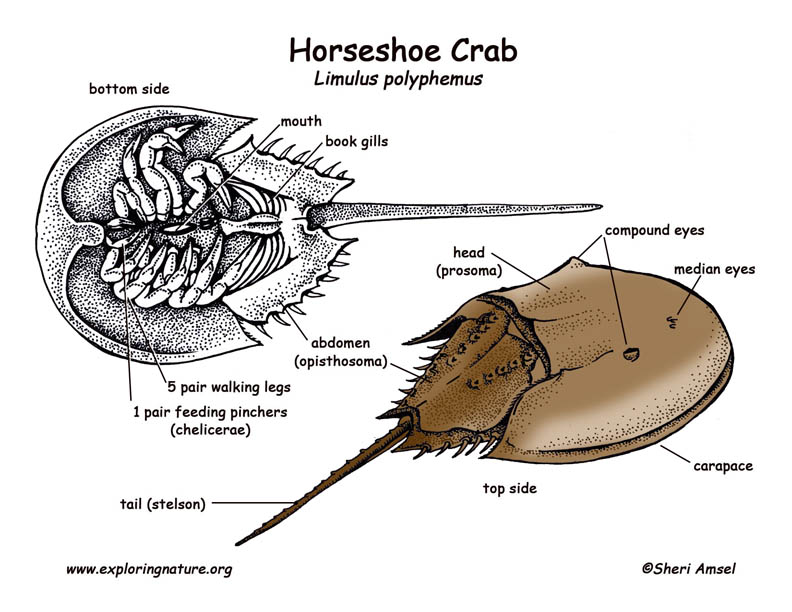

They are found on the Atlantic coastline of North America from Southern Canada through Mexico.
They live in shallow water along the coastline making their way across sandy or muddy areas.
The body is made up of 3 parts. The front part (prosoma) includes the hard outer shell (exoskeleton) and the head and thorax. The middle part (opisthosoma) includes the gills and reproductive parts and is also covered by a hard shell that hinges to the front section. The back part is the tail (telson). The top of the shell has two eyes and two small light sensors where you would think nostrils might be. Underneath they have 6 pairs of walking legs and one pair of smaller front claws (chelicerae) that pick up food. There are small hairs underneath that “smell” food. They breathe through gills.
They make their way across the sandy or muddy bottoms of coastal waterways looking for food. In the winter they go into deeper water and burrow into the mud to wait for spring.
They feed on algae, worms and small coastal animals (mollusks) – like clams. They pick up food with their small front claws (chelicerae), grind it up and pass it into the mouth that sits between and at the base of their six pairs of walking legs.
Not many animals eat horseshow crabs, but they are often attacked by bacteria and fungi that work through their hard outer shell over time.
The female lays more than 80,000 eggs in the spring. This is called spawning. Most are eaten by predators. The few that survive grow and over time shed their shells (molt) as they grow too large to fit inside them. They molt and grow new shells more than 15 times until they become adults.
They are thought to live more than 20 years in the wild.
When you research information you must cite the reference. Citing for websites is different from citing from books, magazines and periodicals. The style of citing shown here is from the MLA Style Citations (Modern Language Association).
When citing a WEBSITE the general format is as follows.
Author Last Name, First Name(s). "Title: Subtitle of Part of Web Page, if appropriate." Title: Subtitle: Section of Page if appropriate. Sponsoring/Publishing Agency, If Given. Additional significant descriptive information. Date of Electronic Publication or other Date, such as Last Updated. Day Month Year of access < URL >.
Amsel, Sheri. "Horseshoe Crab" Exploring Nature Educational Resource ©2005-2024. December 13, 2024
< http://www.exploringnature.org/db/view/Horseshoe-Crabs >

